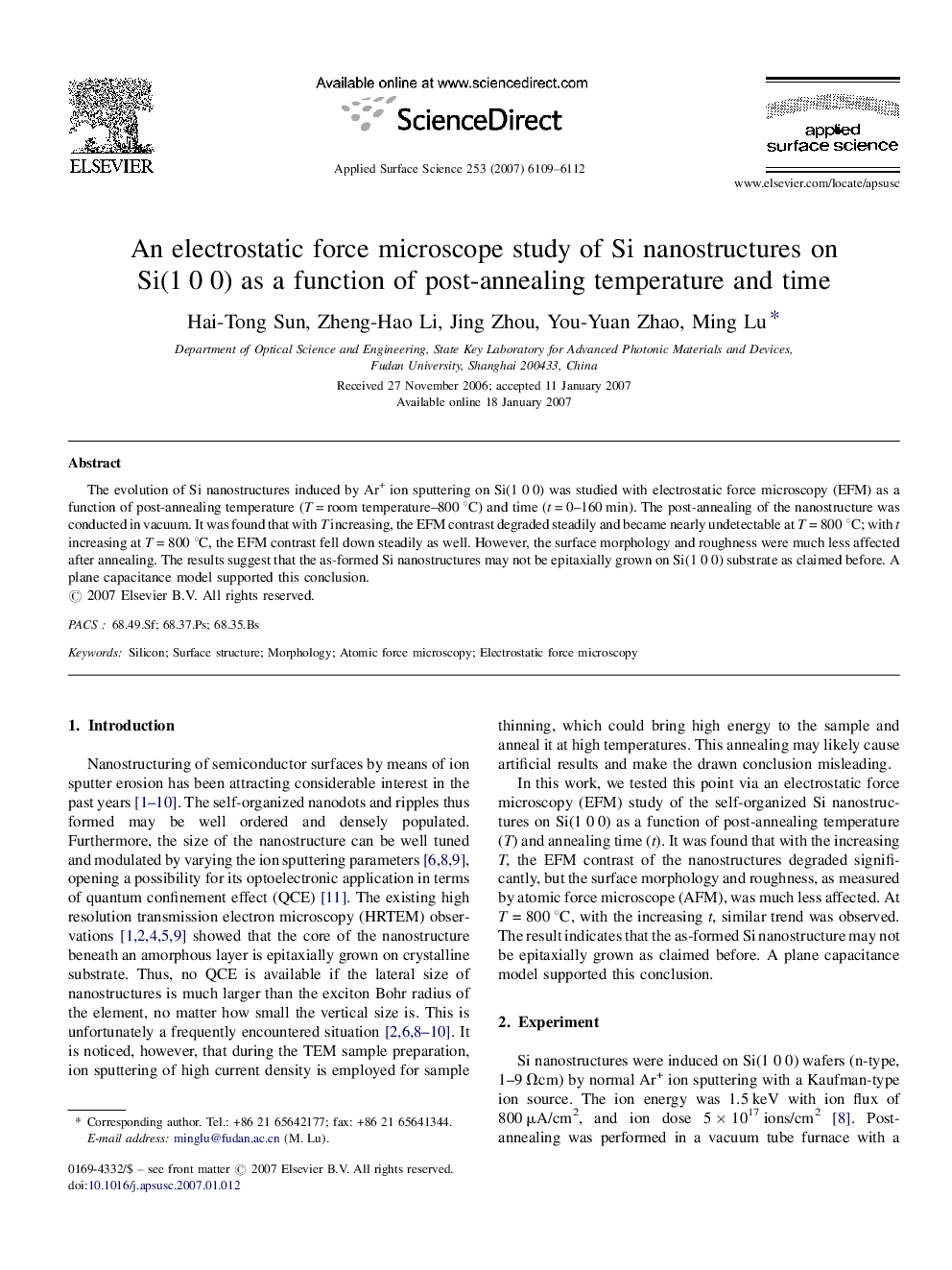| Article ID | Journal | Published Year | Pages | File Type |
|---|---|---|---|---|
| 5365012 | Applied Surface Science | 2007 | 4 Pages |
The evolution of Si nanostructures induced by Ar+ ion sputtering on Si(1 0 0) was studied with electrostatic force microscopy (EFM) as a function of post-annealing temperature (T = room temperature-800 °C) and time (t = 0-160 min). The post-annealing of the nanostructure was conducted in vacuum. It was found that with T increasing, the EFM contrast degraded steadily and became nearly undetectable at T = 800 °C; with t increasing at T = 800 °C, the EFM contrast fell down steadily as well. However, the surface morphology and roughness were much less affected after annealing. The results suggest that the as-formed Si nanostructures may not be epitaxially grown on Si(1 0 0) substrate as claimed before. A plane capacitance model supported this conclusion.
